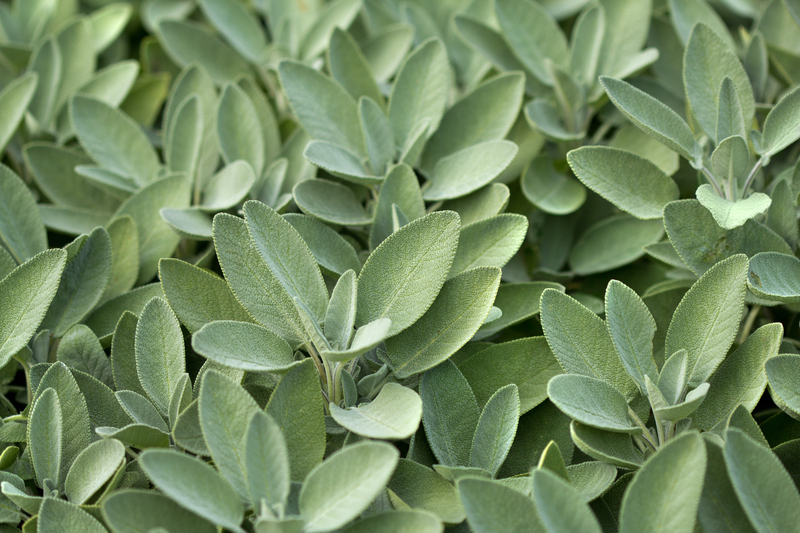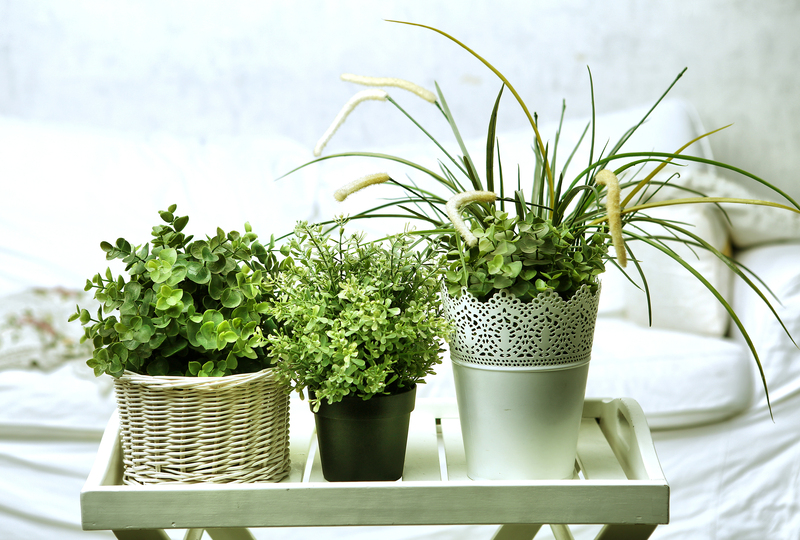Gardening Your Way to a Healthier Climate
Posted on 22/08/2025
Gardening Your Way to a Healthier Climate: How Your Backyard Can Make a Global Difference
In an era where climate change is a pressing concern, it's more crucial than ever to seek sustainable practices within our own backyards. Gardening your way to a healthier climate isn't just a buzzphrase--it's a viable approach to mitigating climate change while fostering personal well-being and biodiversity. This comprehensive guide will illuminate how climate-friendly gardening impacts ecosystems, reduces your carbon footprint, and reconnects you with nature.
The Role of Gardening in Climate Health
Would you believe that your garden beds could help combat global warming? While massive reforestation grabs headlines, climate-conscious gardening is an accessible, localized action with far-reaching ecological benefits. Planting specific species, adopting sustainable methods, and avoiding chemical inputs can help absorb carbon, enhance biodiversity, and reduce greenhouse gas emissions right at home.
- Soil Sequestration: Healthy, undisturbed soil stores more carbon.
- Air Quality Improvement: Plants absorb air pollutants and produce oxygen.
- Biodiversity Support: Diverse gardens become sanctuaries for pollinators and wildlife.
Understanding the Climate Impact of Your Garden
When we talk about gardening for a healthier climate, it's useful to understand the specific mechanisms at play:
- Photosynthesis: Plants absorb atmospheric carbon dioxide and release oxygen, a process that directly counters the chief greenhouse gas responsible for warming.
- Soil Health: Sustainable gardening practices, such as composting and mulching, increase soil organic matter and bolster carbon storage capacities.
- Cooling Effects: Lawns and forests moderate local temperatures, reducing the urban heat island effect so prevalent in cities.
Each of these outcomes contributes to a garden's ability to promote a healthier climate locally and globally. Every decision you make as a gardener--no matter the plot size--has a measurable impact on our shared environment.

Creating a Climate-Friendly Garden
Want to transform your backyard into a climate champion? Here are actionable steps and best gardening practices that optimize your personal outdoor space for climate health.
1. Opt for Native and Climate-Adapted Plants
- Native plants are adapted to your local environment--they thrive with minimal water, fertilizer, and pesticide.
- Diversify your plantings--a varied garden is more resilient to pests and climate fluctuations.
- Consider climate-resilient varieties that withstand drought or heavy rain, reducing resource input.
Native gardening not only conserves water but also provides critical habitat for pollinators like bees, butterflies, and hummingbirds, strengthening your local ecosystem one plant at a time.
2. Compost to Feed the Soil and Store Carbon
Composting is one of the best ways to nurture your garden while being climate conscious. Grass clippings, kitchen scraps, and autumn leaves can all become rich, organic amendments. Adding compost:
- Reduces the amount of organic waste sent to landfills--decreasing methane emissions.
- Improves soil structure and increases its carbon storage ability.
- Boosts water retention, reducing the need for irrigation.
Every shovelful of compost you add helps in gardening your way to a better climate by locking away carbon that would otherwise be released as a greenhouse gas.
3. Reduce Synthetic Inputs
Modern gardening often relies on chemical fertilizers and pesticides, but these products are derived from fossil fuels and can leach into water systems. More importantly, they disrupt the delicate microbial life in soil that's key for carbon sequestration.
- Opt for organic fertilizers, or let your homemade compost do the work.
- Practice integrated pest management--encourage beneficial insects instead of using chemical controls.
- Mulch your garden beds to suppress weeds, moderate soil moisture, and reduce the need for herbicides.
These small changes make your garden a net positive for the environment and enhance its resilience against pests and diseases.
4. Smart Watering for Resilient Gardens
Water conservation is crucial as climate change brings more extreme droughts and unpredictable rainfall patterns. Gardening for a healthier climate means watering efficiently:
- Water early in the morning or late in the evening to minimize evaporation.
- Install drip irrigation systems to target roots and reduce water waste.
- Utilize rain barrels to capture runoff for your garden.
- Choose drought-tolerant species where possible.
These water-wise strategies ensure your garden thrives with less, making it truly climate-friendly.
5. Support Wildlife and Pollinators
Biodiversity is a significant pillar in the quest for a healthier climate. To nurture beneficial wildlife in your climate-resilient garden:
- Include a variety of flower shapes and bloom times to support pollinators spring through fall.
- Install birdhouses, bat boxes, and leave some areas "wild" for insects and amphibians.
- Avoid using pesticides, which can inadvertently harm bees and butterflies.
The result: a garden ecosystem that balances itself, reducing pest outbreaks and improving pollination for better yields.
The Benefits of Gardening for the Climate
Soil--Your Biggest Carbon Ally
Healthy soil, nurtured by organic matter and covered with living plants, is a powerful carbon sink. According to climate researchers, soils worldwide store more carbon than the Earth's atmosphere and all its vegetation combined.
- Reduce tilling to preserve soil structure, helping prevent the release of stored carbon into the atmosphere.
- Keep soil covered with plantings or mulch year-round to avoid erosion and loss of organic matter.
Gardening your way to a healthier climate starts with the ground beneath your feet.
Food Production and Climate Change
The global food system--transport, fertilizer, packaging--accounts for a major share of greenhouse gas emissions. Growing your own food locally slashes transportation energy and reduces plastic packaging waste.
- Start a vegetable patch and swap produce with neighbors to diversify your diet and carbon cutbacks.
- Choose heritage and disease-resistant varieties for productive, resilient crops.
When you cultivate edible plants, you're not just feeding your family; you're directly supporting a healthier climate.
Urban Gardens as Climate Havens
Urbanized spaces suffer from heat islands, poor air quality, and stormwater runoff. However, rooftop gardens, community plots, and even balcony plantings offer a powerful antidote by:
- Cooling surfaces and buildings naturally.
- Absorbing rainfall and reducing urban flooding.
- Offering habitat corridors for migrating pollinators.
Every city dweller can play a part by greening their small patch of the urban jungle.
Climate Gardening Myths: Busted
1. Large Gardens Are Necessary to Make a Difference
Every garden counts! Whether you steward a vast yard, a community plot, or a few pots on a patio, every bit of green space helps stabilize the climate.
2. Lawns Are Good for the Environment
Conventional lawns require mowing, fertilizing, and watering, all of which generate pollution and consume resources. Converting even part of your lawn to pollinator habitat, vegetable beds, or a native wildflower patch multiplies your garden's climate benefit.
3. It's Too Expensive to Start Climate-Friendly Gardening
Many effective climate-gardening practices cost less. Composting, collecting rainwater, and swapping seeds with neighbors can save money and reduce your ecological footprint.
How to Get Started: 10 Simple Steps
- Evaluate your space for sun, soil type, and slopes to plan smart plant placement.
- Replace some turf grass with native shrubs or pollinator meadows.
- Start a compost bin for kitchen scraps and yard waste.
- Plant at least three new native species each season.
- Install rain barrels or a drip irrigation system.
- Apply mulch using local organic materials--leaves, wood chips, or straw.
- Switch to electric or manual tools over gas-powered mowers and blowers for a smaller carbon footprint.
- Choose organic fertilizers and natural pest controls.
- Encourage neighbors or community groups to take similar climate-friendly actions.
- Record your garden's transformations--share successes on social media to inspire others!
Frequently Asked Questions About Gardening for a Healthier Climate
How does gardening help slow climate change?
Gardening absorbs CO2, restores soils, supports wildlife, reduces runoff, and cools local environments--all actions that mitigate climate change's impact.
What is the best way to make my garden climate-friendly?
Focus on native planting, composting, reducing chemicals, water conservation, and biodiversity. Even one of these steps starts your journey toward a healthier climate.
Can urban gardeners really make a difference?
Yes! Vertical gardens, rooftop plots, and city courtyards bring critical green space to heat-trapped areas, supporting both climate and community health.

Inspiring Success Stories
Around the world, individual gardeners and communities are gardening their way to healthier climates:
- The Incredible Edible Project in Todmorden, UK, transformed the town with free public vegetable gardens, reducing carbon emissions and increasing local food security.
- In the United States, Backyard Habitat Certification programs have enrolled thousands of homes in climate-friendly gardening, reestablishing wildlife corridors in urban and suburban neighborhoods.
- Guerrilla gardeners in global cities have greened vacant lots with native plants, pollinator meadows, and rain gardens, mitigating local air pollution and stormwater problems.
These victories prove that positive change starts one garden at a time.
Conclusion: Gardening for the Good of the Planet
Gardening your way to a healthier climate is a powerful, rewarding act--one that connects you with nature, sustains local wildlife, nourishes your family, and slows climate change. By implementing the gardening strategies outlined here, you become part of a global movement of climate-conscious gardeners leading the way to a more sustainable future.
So dig in, plant boldly, and watch your garden--and the climate--blossom for generations to come.
Ready to garden your way to a healthier climate?
Start with small changes, share your journey, and inspire others to join this green revolution!
```
